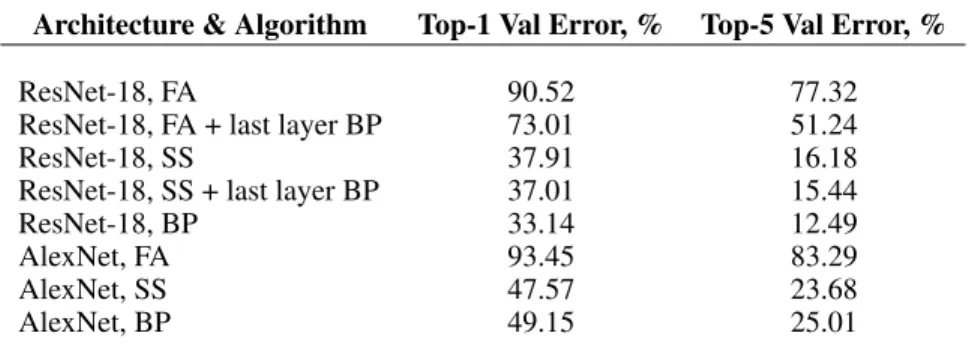Biologically-plausible learning algorithms can scale to large datasets
Texte intégral
Figure




Documents relatifs
HTMRL can explore rarely selected actions through the boosting mechanism also present in core HTM theory, which amplifies incoming signals of rarely activated output bits..
In this paper, we present the GeneTegra Alignment Tool (GT-Align), a practical implementation of the ASMOV ontology alignment algorithm within a Web-based
Furthermore, we apply Assani’s result to prove that the M¨ obius and Liouville functions are a good weight for the ho- mogeneous ergodic multilinear averages if the restriction of
D‟autres pays européens ont suivi et, en France en 1997, la conférence nationale de santé a insisté sur la nécessité d‟offrir aux malades cancéreux une
As we mentioned in the introduction, the lower bound can be obtained with the help of the coarea formula, like in [ABO03], and, before that, as seen in [ABL88].. I am indebted
Indeed, we prove that on any given Riemannian manifold, there exists families of densities such that the associated Cheeger constants are as small as desired while the
The EOM has been designed to calculate the position on the 3D space, yet the information is displayed to the Learner as an augmented path in 2D space; a 2D line that
Very recently, the author provided a simultaneously simple proof of Birkhoff ergodic theorem and Bourgain homogeneous ergodic bilinear theorem with an extension to polynomials